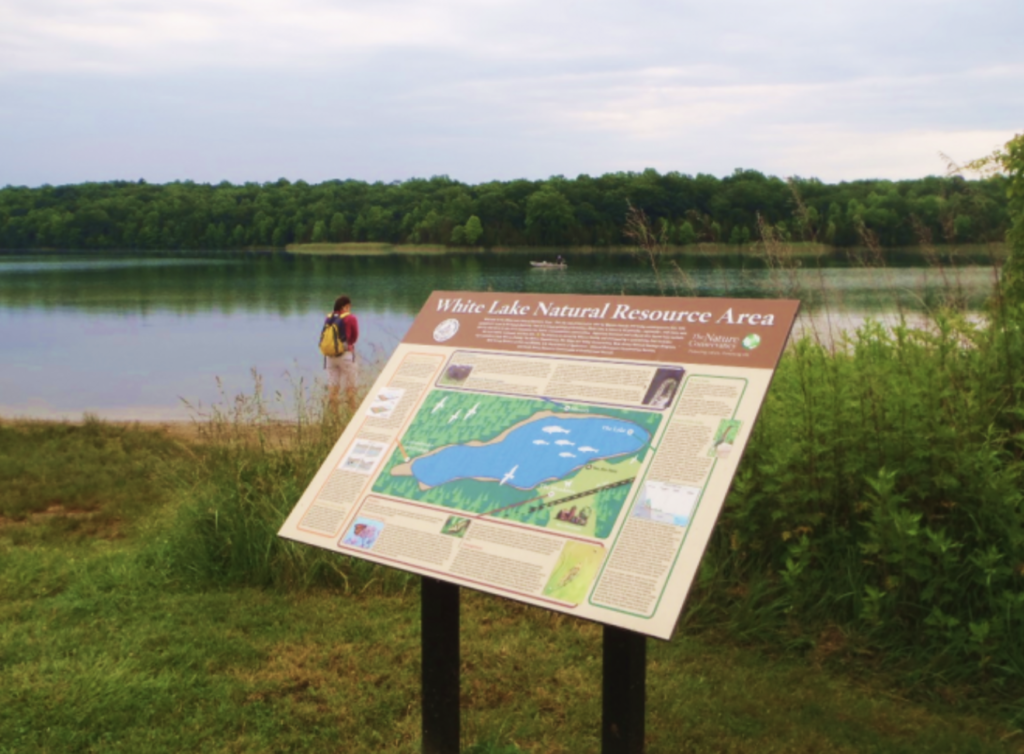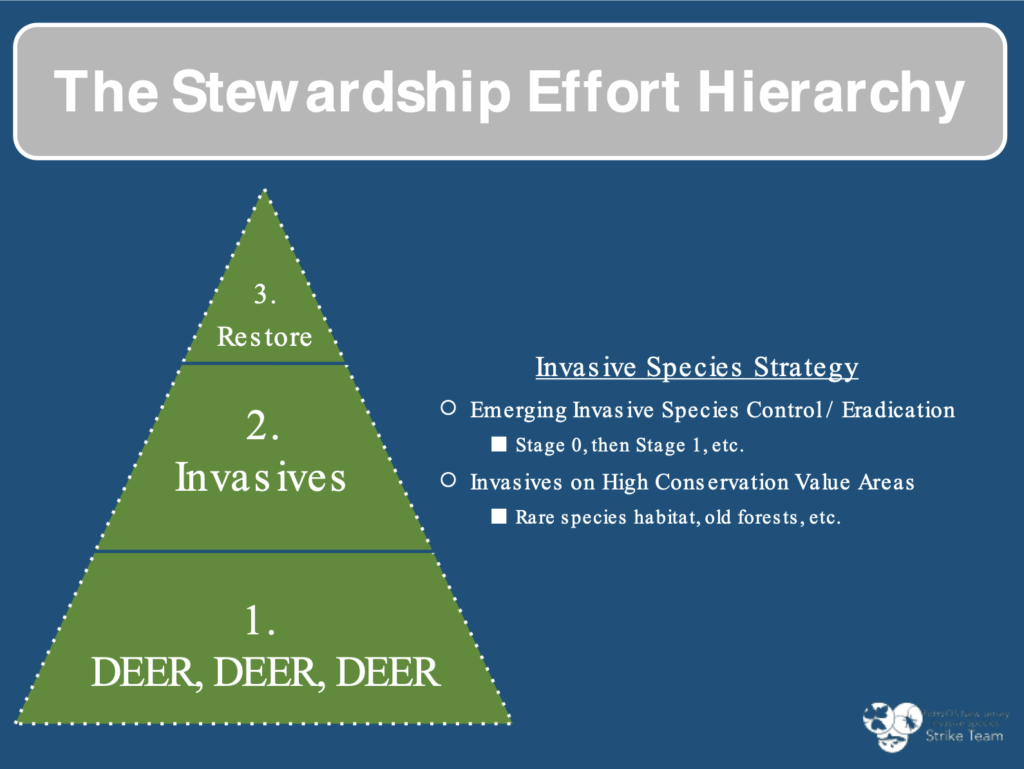New Jersey Audubon – White Lake Invasive Species Management Plan
ABOUT

In 2022, the Strike Team completed a comprehensive stewardship plan for the New Jersey Audubon at Warren County’s 515-acre White Lake Natural Resource Area in Hardwick Township.
The goal of any plan is to provide effective and efficient guidance toward improving ecological health. We start by mapping natural plant communities (e.g., forest types, shrublands, meadows) and invasive species as “stands” of like plant composition. Once completed and analyzed, making heavy use of Geographic Information Systems (GIS), we provide prioritized recommendations. Recommendations focus on strategic implementation steps that begin with the most achievable to those that can require many years to accomplish – all with the intention of improving ecological health.
The property contains nearly 17 acres of globally rare limestone fen communities, 5 acres of habitat for globally rare Northern Metalmark Butterflies, and 130 acres of high quality older forests. There were 11 emerging invasive species and over 300 acres of heavily infested habitats.
The plan can be downloaded here.
The Strike Team always stresses the ”Stewardship Hierarchy” in our plans.

- Whenever feasible, this includes the importance of deer management – a reduced herd allows native plants to effectively compete against invasive plants.
- The next priority is elimination of small populations of emerging invasive plant populations before they can spread to become larger intractable problems. Priority should be given to controlling species with the least number of statewide populations so that they cannot spread to neighboring properties.
- This is followed by improving / protecting the highest value conservation areas that typically have relatively few infestations. Ecological restoration, including tree planting and meadow installation to replace open lands or lawns are often high-value strategies.
- Finally, long-term efforts to reduce large infestations are recommended, starting from infested areas adjacent to healthier areas to stop their spread into new areas.
PROJECT TYPE
Contract
PROJECT PERIOD
2022-2023
PROJECT LOCATIONS
White Lake Natural Area
